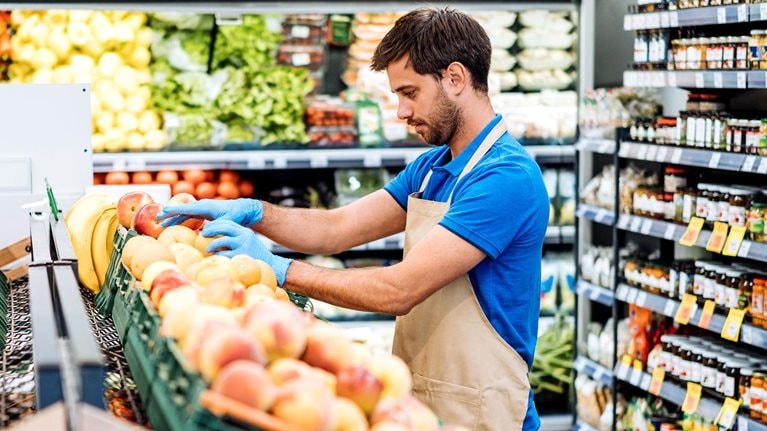Well before COVID-19 hit, consumers of diverse demographic stripes had been experimenting with conscious eating to achieve a range of health and sustainability goals that have become as important to them as traditional food goals like losing weight. But the pandemic accelerated the trend, spurring consumers to eat fresher, healthier food. Does the trend remain alive and well? How widespread is it? Are food companies and retailers meeting the needs of these consumers?
To answer these questions, we conducted an online survey of some 8,000 consumers in the United States, the United Kingdom, France, and Germany after pandemic restrictions relaxed. We found that conscious eating is here to stay, but consumers are confused about what food is healthy and sustainable. We found that consumers’ interest in health outweighs their interest in sustainability. And we found that consumers are frustrated because retailers and food producers aren’t keeping up with their quest for conscious eating. Less than one-third of consumers surveyed find the range of products on grocery shelves “great” (see sidebar, “Key survey insights”).
Strong consumer commitment to good health
At least 70 percent of the survey respondents across the markets surveyed want to be healthier. Food is essential to achieving that goal, and about 50 percent of consumers, across age groups, say healthy eating is a top priority for them.
For this half of consumers, healthy eating means reducing consumption of processed foods and sugar (their top concerns), as well as fat, salt, and, for some, red meat.
French consumers, in particular, walk the talk of healthy eating, as they long have. More than half of the French consumers surveyed cut more “unhealthy” ingredients from their diet during the pandemic. Consumers in the other countries are following suit, but more moderately (Exhibit 1).

Younger consumers are more likely to have a longer list of ingredients that they seek to avoid. The 18- to 24-year-old cohort, in particular, prioritizes reducing their consumption of red meat, dairy, and gluten. It is worth noting that younger consumers report food allergies and intolerances at much higher levels. In France, Germany, and the United Kingdom, about 30 percent of 18- to 24-year-olds report food allergies or intolerances. In the United States, that number climbs to 50 percent. By comparison, less than 20 percent of those 35 or older report food allergies or intolerances. The need to manage these health issues may play a role here.
The pandemic-induced changes
The pandemic has had real impact on the eating patterns of consumers across countries, age groups, and income levels. Conscious consumers report eating fresher, healthier foods, especially fresh produce (40 percent) and food without artificial ingredients (33 percent). Many are cooking more meals at home, where they have greater control over what they eat (40 percent) (Exhibit 2).

One in two consumers surveyed say that the pandemic changed the way they eat, and one in six made major changes. The changes are especially pronounced in the younger generations, who are much more likely than older consumers to report having made some or even major changes in their eating habits, especially eating less animal products and buying more food from small or new brands (Exhibit 3).

Health trumps sustainability
While health and sustainability goals are intertwined in many consumers’ minds, health outweighs sustainability. Most survey respondents prioritize eating healthy over limiting their personal impact on climate change. This gap is especially pronounced among consumers 65 and older—about 50 percent versus 33 percent—and among French consumers of all ages (except the 18- 24-year-old cohort).
This is not to say that conscious consumers ignore sustainability. Sustainability ranks high as a consumer goal in the United States (64 percent) and in Germany (70 percent). Across the markets studied, younger consumers are the most motivated to limit their personal impact on climate change.
But, while more than 60 percent of the consumers surveyed value sustainable solutions, only about 28 percent report eating more sustainable products, and less than 30 percent are willing to pay more for options designed to protect the environment. What’s more, willingness to pay differs by age. Across the countries studied, about 33 percent of consumers under the age of 44 would pay more for foods in plastic-free packaging; only 20 percent of their elders agree.
Consumers admit that their willingness to take steps to advance sustainability depends on the effort required. For example, half of US consumers say that they freeze food to avoid waste, but less than a quarter of the same consumers would go the extra mile to avoid using plastic wrap and sandwich bags (Exhibit 4).
Different strokes for different folks
Two dietary trends loom especially large today—flexitarianism and consumption of plant-based alternatives to meat.
Flexitarianism gains traction
Flexitarianism has gained popularity as conscious consumers aspire to eat little or no meat. Often called casual vegetarianism, flexitarianism centers on eating plant-based food, with only occasional consumption of meat.
Just a small percentage of the consumers surveyed identify as vegan or vegetarian (3 to 6 percent across the markets studied), and that number has increased only slightly over the years. Meanwhile, more than half of consumers in France and Germany and almost half in the United Kingdom and the United States consider themselves flexitarians.
According to our Global Protein Survey, most flexitarians (73 to 93 percent) plan to further reduce their meat consumption. Only 27 to 31 percent of frequent meat eaters share that aspiration. The market, therefore, is clearly bifurcating (Exhibit 5).

More people are trying plant-based alternatives
Conscious consumers are willing to give plant-based alternatives a try. About 25 percent of the survey respondents ate more plant-based products during the pandemic. About 33 percent call themselves consumers of plant-based products, especially plant-based milk and meat. Another 15 percent expect to start consuming plant-based products in the next year. But very few plan to abandon the “real thing” altogether.
Most survey respondents, especially in the United States, consume plant-based products to benefit their own health much more than the health of the environment. Germany is the exception. There, the desire to try something new nearly ties with animal welfare—suggesting strong momentum in the consumption of plant-based alternatives (Exhibit 6).

But, while consumers are eating more plant based products, about 50 percent of those surveyed still greatly prefer the taste of animal protein products over their plant-based alternatives. Plant-based categories that consumers find more palatable (for example, plant-based milk and meat) will grow faster than categories in which taste technology is still maturing (for instance, plant-based cheese). This has great implications for consumer-packaged-goods manufacturers, as many players look to expand their plant-based portfolio.
Obstacles to the expansion of conscious eating
Consumers are struggling to find their way to healthier and more sustainable eating habits. Retailers are well equipped to help them. The survey, however, identified four obstacles to the expansion of conscious eating that retailers and food companies can help overcome.
Uncertainty about how to eat healthily and sustainably
Despite their desire to do better, almost 50 percent of consumers admit to having difficulty understanding what they need to do when it comes to choices on health and sustainability. Providing simple and easy-to-understand information about product impact on health and sustainability could make a world of difference for consumers who are eager to learn (Exhibit 7).

Younger consumers would especially benefit from information on how to walk the talk. These consumers are the biggest advocates of eating healthily and sustainably, but they are also the biggest cohort to admit not understanding how best to do so. For example, 50 percent of UK millennials recognize the importance of being healthier, but just as many report having difficulty understanding what to do; that number jumps to 57 percent for Gen Z consumers. Likewise, 54 percent of Gen Z consumers in France are motivated to limit their impact on climate change, but 59 percent have difficulty understanding how to do so.
Limited range of products on grocery shelves
Less than half of consumers believe that their principal grocery store stocks the products they need for healthy and sustainable eating. This view is particularly strong in Germany. Consumers are especially critical of the lack of plastic-free products; small, independent brands; and organic foods. Retailers have a huge opportunity to improve their product assortment (Exhibit 8).

Difficulty adhering to health goals when eating out or ordering delivery
Fulfilling health goals when eating from restaurants is a challenge, especially for French and German consumers. Restaurants and takeout establishments need to rethink their menus—adding more healthy, sustainable food options and providing information about the impact of menu items on health and the environment.
Consumer price sensitivity
Most consumers have historically been quite price-sensitive when it comes to their weekly grocery wallet, and they demand value for money. Now, inflation is raging. At 9.1 percent, the US inflation rate in June 2022 was the highest since 1981. At the same time, cost increases are outpacing consumer wage growth. Consumers face tough choices about the food they buy and consume. Our latest US pulse survey finds that 74 percent of consumers are changing their shopping behavior to get more for their money, including buying food in bulk, adjusting the quantities purchased, and purchasing a less expensive brand or private label.
Consumer commitment to conscious eating is strong. And across the countries studied, conscious consumers of all ages and income levels have begun to translate that commitment into healthy, sustainable habits. But consumers need help from food companies and retailers to get easy-to-understand product information and ready access to the right stuff.


